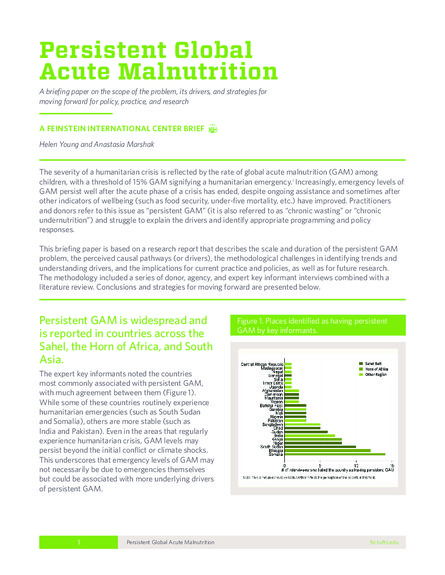
In many protracted emergencies, the prevalence rates of global acute malnutrition (GAM) regularly exceed the emergency threshold of > 15% of children despite ongoing humanitarian interventions. The widespread scale and long-lasting nature of “persistent GAM” means that it must be a policy and programming priority. Drawing on a literature review and a series of key informant interviews, this paper describes the following:
- Scale and duration of the persistent GAM problem
- Perceived causal pathways
- Methodological challenges in identifying trends
- Implications for current practice and policies
- Implications for future research
